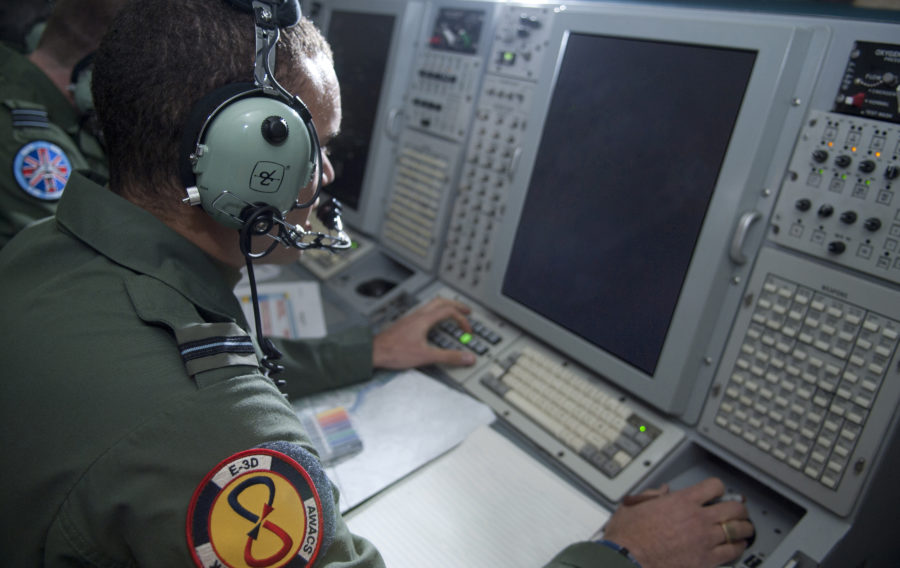
The need to modernise the Link 16 tactical datalink system is fast approaching – driven by a US programme of frequency re-allocation, increasing data volumes and crypto modernisation. What does this mean for those with capability sponsor, acquisition and supplier responsibilities? And where are the opportunities to look beyond a plug–and–play box replacement programme toward future battlespace datalink communications requirements? Without getting into the technical weeds, 3SDL’s Chris Jones offers some thoughts.
Link 16 – force multiplication across all operating environments
Arguably, the evolution of Link 16 over the last 40 years has provided commanders with their greatest force multiplier in the tactical communications domain. To many, it is mission-essential equipment that enables battle-winning situational awareness and decision-making at the platform, C2 node and HQ levels. However, to most, the complexities of the system design, the interfaces and the networking requirements are largely masked by the user-friendly terminals that provide the front-end capability.
Link 16 was born into the Air environment in the 1970s to provide secure and interoperable data exchange and fused operating pictures for real-time decision-making. But, like any V/UHF line of sight communications system, it is accessible across all operating environments. The tactical datalink has long been an integral part of ship combat systems and it is routinely fed into Land formations, particularly to inform Ground Based Air Defence command and control. Fit and form functionality and network resilience have been scaled to meet evolving military requirements, whilst integration and accessibility are being further increased through Maritime Multi Link (MML) programmes and wider adoption of the Joint Range Extension Application Protocol (JREAP). The situational awareness and decision quality data that Link 16 brings is now ubiquitous and presumed in the battlespace.

Modernisation to meet the demands of the future EM operating environment
But wholesale change is on the way for Link 16. To provide a system that meets the demands of the increasingly congested and contested electro-magnetic operating environment, the US is pushing ahead with an upgrade to address frequency allocations, data volumes and, most significantly, crypto modernisation. By early 2022, these changes will have to be adopted by all Link 16 operating nations that wish to stay in the network.
This will require new terminals on all operating platforms – over 12,000 at the last count across nearly 30 nations. On the face of it, this appears to be a relatively straightforward box replacement programme or plug-and-play upgrade. And that works for nations that have closely followed the US approach over the last couple of decades in their Link 16 programmes. Elsewhere, which is the majority, the challenge of integrating new software definable Link 16 radios with legacy systems is immense and should not be underestimated by capability sponsors, acquisition organisations and industry suppliers.
Three main areas of risk appear to be emerging. Most important is, of course, understanding the true cost of Link 16 modernisation. There is much talk in the community about the cost of new terminals, but few are thinking about the true cost of ownership of the system of systems. What modifications or interfaces may be required with legacy equipment to sustain functionality and where does the Link 16 funding boundary start and stop in future, more integrated systems such as MML and JREAP?
Next is the impact of an incremental transition to modernised systems on ‘mixed fleet’ operational and safety risk management. The interoperability of Link 16 and the integrity of the decision support that it provides may be compromised by operating both legacy and modernised systems in the same battlespace.
And finally, what opportunities might be missed if we constrain our thinking around how to deliver Link 16 terminal replacement programmes, rather than where we can develop new datalink concepts for battlespace communications?
The onus is on government capability managers and acquisition organisations to understand and mitigate costs and make the right levels of funding available. Where a nation seeks to integrate Link 16 into numerous platforms and environments, a centralised approach to procurement and managing integration appears to offer cost and time advantages. Previous UK experience of inefficiencies through multiple, independent delivery approaches to cross-cutting capabilities is salutary. For operational and safety risk, user authorities and commanders need to be included in the change programmes from the outset to anticipate and control the impact on critical C2 outputs, particularly in coalition and alliance scenarios.
A new context for tactical datalinks?
For industry suppliers away from terminal providers, most interesting may be the opportunity to help governments and military users think about the future of tactical datalinks like Link 16 in a more socio-technology driven context. The battlespace has changed over the last 40 years and, whilst modernisation brings agility through software defined radios and threat mitigation through electronic keyed crypto, the outputs required from datalinks will continue to evolve. Future considerations might include:
- Symmetrical Digital Warfare 2.0. Have we become too focused on making tactical datalinks our advantage in an asymmetrical world? As symmetrical warfare returns to our consciousness, are there forgotten or ignored symmetrical warfare issues we need to revisit such as message sets and Land formation integration under Information Manoeuvre?
- Artificial Intelligence / Machine Learning. How can tactical datalinks benefit from Artificial Intelligence (AI) / Machine Learning (ML)? Will AI speed up the demise of fixed format RF-based networks or simply redirect it, or something else? Do we as a community have a common understanding of AI/ML and the opportunities? Could prescribed, pre-mission ‘filtering’ be replaced by AI running dynamic information distribution?
- Radio Frequency Spectrum congestion. What would the impact be of another western satellite-based navigation system to complement GPS and Galileo? Where is the civilian comms market going next in spectrum requirements and will that require more frequency remapping in the U/VHF Air Navigation band? Are there any other likely issues with the spectrum, such as taxation?
- Information Assurance. Will our current and future datalinks (networks, data, functionality, capacity) continue to be assured for confidentiality, integrity and availability? Given the increasing diversity of cyber threats, how, where and when must cyber defences be applied?
- Space Domain. Do we understand where airspace stops and space starts and the requirements of tactical datalinks across the boundary? How will Space Situational Awareness be integrated with the Common Operating Picture? Experience shows it can take a decade to change a display system…
- Fixed Format versus Variable Length. Are 144-character texts appropriate in a digital comms world? Should we primarily focus on new message exchange methodologies now and forget short, fixed format messaging?
Tactical datalink evolution – not Link 16 terminal replacement
The industrial politics of tactical datalinks has always surprised newcomers in its ability to drive investment and delay capability. For example, the UK’s implementation of a joint, integrated Link 16 solution could be seen as being 30 years late, and still counting. The moment may be fast approaching when the requirements of Link 16 modernisation force us to think more deeply – beyond a terminal replacement programme and also across the fundamental tenets of the future operating and acquisition environments that tactical datalinks will need to evolve in.
The Link 16 modernisation cliff-edge will force change; but can it also encourage smarter thinking? With collective endeavour we have the opportunity to review the modernisation requirements through a wider lens – one that captures the rapidly increasing influences of economics, congestion, hyper-connectivity and autonomy in space, cyber and the entire electro-magnetic spectrum. True force multiplication will only come if we design our new tactical battlespace communications with these factors in mind.
It’s been a good news story for Link 16 so far. But how will we ensure that success is sustained?
If you would like to join our community and read more articles like this then please click here.







